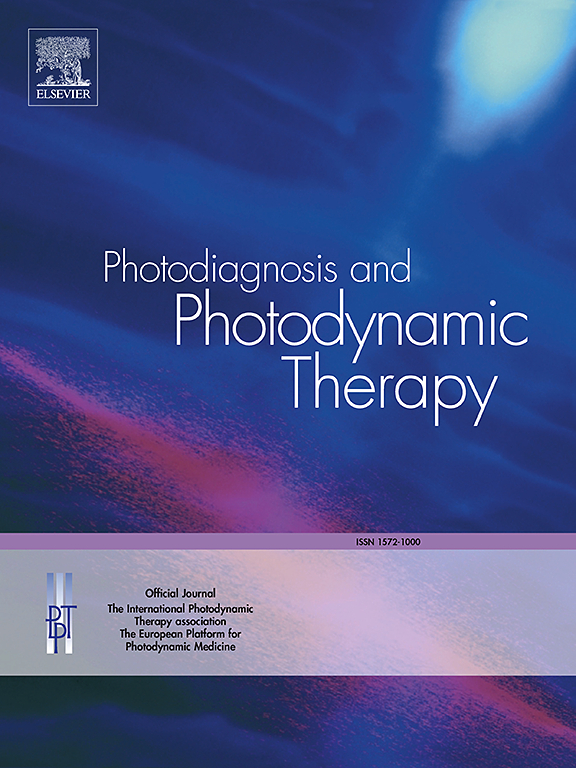玫瑰孟加拉光动力抗菌疗法作为铜绿假单胞菌感染性坏死性巩膜炎的辅助治疗。
IF 3.1
3区 医学
Q2 ONCOLOGY
引用次数: 0
摘要
目的报道玫瑰孟加拉光动力抗菌治疗(RBPDAT)作为铜绿假单胞菌继发的快速进展的感染性坏死性巩膜炎(INS)的辅助治疗的效用。方法对经培养证实的巩膜炎和铜绿假单胞菌连续行RB-PDAT的患者进行回顾性分析。结果纳入6例铜绿假单胞菌INS患者。所有患者的感染均得到完全解决。RB-PDAT术后平均解决时间为17天(范围;6 ~ 30天),总疗程平均36天(范围;22-60天)。1例泛耐药假单胞菌性硬角炎患者由于间质持续融化需要两次RB-PDAT治疗。所有患者均接受标准化的口服氟喹诺酮、局部妥布霉素和环丙沙星/莫西沙星治疗方案。泛耐药铜绿假单胞菌患者也需要局部亚胺培南治疗。没有患者需要摘除眼球。结论RB-PDAT治疗铜绿假单胞菌引起的感染性坏死性巩膜炎是一种可行的治疗方法,尤其是对即将穿孔的患者。本文章由计算机程序翻译,如有差异,请以英文原文为准。
Rose Bengal photodynamic antimicrobial therapy as an adjunct treatment for Pseudomonas aeruginosa infectious necrotizing scleritis
Purpose To report the utility of Rose Bengal Photodynamic Antimicrobial Therapy (RB-PDAT) as an adjunct treatment in rapidly progressing Infectious Necrotizing Scleritis (INS) secondary to Pseudomonas aeruginosa. Methods Retrospective chart review was conducted on consecutive patients with scleritis and culture-proven Pseudomonas aeruginosa who underwent RB-PDAT. Results Six patients with Pseudomonas aeruginosa INS were included. All patients achieved complete resolution of the infection. The mean time to resolution after RB-PDAT was 17 days (range; 6–30 days), with a total treatment course average of 36 days (range; 22–60 days). One patient with pan-resistant Pseudomonas sclerokeratitis required two RB-PDAT treatments due to persistent stromal melting. All patients received a standardized regimen of oral fluoroquinolone, topical tobramycin, and ciprofloxacin/moxifloxacin. The patient with pan-resistant Pseudomonas aeruginosa required treatment with topical imipenem as well. None of the patients required enucleation. Conclusion RB-PDAT is a feasible option to halt the progression of infectious necrotizing scleritis caused by Pseudomonas aeruginosa, especially in cases of impending perforation.
求助全文
通过发布文献求助,成功后即可免费获取论文全文。
去求助
来源期刊

Photodiagnosis and Photodynamic Therapy
ONCOLOGY-
CiteScore
5.80
自引率
24.20%
发文量
509
审稿时长
50 days
期刊介绍:
Photodiagnosis and Photodynamic Therapy is an international journal for the dissemination of scientific knowledge and clinical developments of Photodiagnosis and Photodynamic Therapy in all medical specialties. The journal publishes original articles, review articles, case presentations, "how-to-do-it" articles, Letters to the Editor, short communications and relevant images with short descriptions. All submitted material is subject to a strict peer-review process.
 求助内容:
求助内容: 应助结果提醒方式:
应助结果提醒方式:


